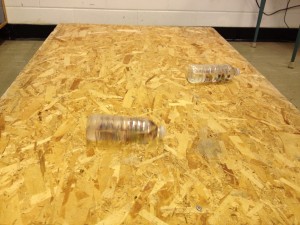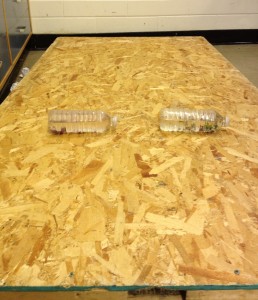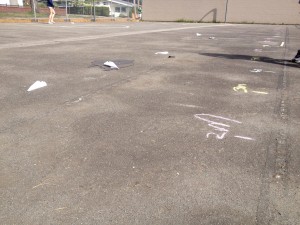The last week or so has been focused on assessment here at SPH Kemang Village and it has been quite interesting. To begin with, it is great to be working at a school that has an assessment policy and strategy based on some of the most recent research in the field. The discussion and guidance that is offered, all with the intent of aiding the students learning as much as possible, is fantastic as a new teacher. There were also examples given that help in how to set up your mark book based on a rubric. Everything in the junior school is marked on a four point rubric based on “not meeting expectations”, “approaching expectations”, “meeting expectations”, and “exceeding expectations”. It is definitely still a work in progress to sort out how all the pieces fit together, but I really appreciate that there is a system with intent and goals. Marc Bergen, one of the leaders at SPH Kemang gave a great session yesterday on the importance of and strategies for formative and summative assessment. One of the aspects I appreciate the most is that there are experienced teachers who are using these assessment techniques that are willing to talk and share about what they are doing. One of my greatest hopes in coming to this school was to learn from other experienced teachers and so far it looks like the right place for that. Hopefully, in future posts, I can discuss in more detail how the four point system works for me and ways it may be helpful for others. What do you think of grading entirely on a rubric system?
Author Archives: mikeburge
Assessment – For real
This week we had a session on assessment and how it is performed at SPH Kemang Village, our school. It was refreshing to discover that much of what I have learned over the past year directly relates to how they are attempting to conduct assessment. Formative assessment is extremely important in our practice and is completed both formally through regular check ins and informally on a daily basis as a professional teacher. Report cards are based on assessment outcomes and are all graded on a 1-4 scale, with 2 being approaching expectations, 3 being meeting expectations and 4 being exceeding expectations. It is encouraging to see a school trying to figure out how to actually put these methods into practice even in the face of skepticism from others including parents. I had some great conversations with experienced teachers who are using this method and figuring out ways to continue to improve assessment that is best for students. The teachers here are clearly interested in what is best for the students and put a lot of time and effort into figuring out where the students are in order to help them progress. I hope to continue to learn from these great teachers and improve my own practice. I do appreciate all I have learned at UBC as I feel like I do not have to learn a whole new system of assessment. I feel like the UBC program has given me a fantastic start on best practices of assessment, even though when leaving the program, assessment was an area I still had a lot of questions about. Assessment is a difficult area of teaching, but one of the most important. I aim to continue to get better at it for the sake of all of my students.
Teaching in Jakarta – Week 1
What can I say. It has definitely been a whirl wind. Leaving my degree program early in order to take a job in Jakarta and transplant my family of four young children has not been easy. Teaching with only a day in the country in a new culture and a new school has been quite an undertaking. But on a certain level teaching in teaching. I have had a chance to settle a little and now look to take on the challenge of being the teacher to a group of dynamic, multi-background, mostly uprooted grade 4 children. On my first day, one of my students became overwhelmed and passed out. Fortunately I was standing right beside him and happened to reach out and catch him so that he did not fall. In doing so, I was then in the perfect spot to be vomited on. Honestly I was much more concerned for the child and having four children of my own it is no longer a big deal to be thrown up on. However, having to where a uniform to teach, black pants, white shirt and tie, and only having one pair of pants so far just made for one extra dynamic to the situation. In the end the child was fine and I got my pants washed. Only one week later, we had a major storm and the parking garage and main floor of our apartment flooded. I ended up walking through waste deep water in bare feet, of course once again in my only uniform pants, to make it back home and spend time with my family in an apartment with no electricity. In general, the teaching has been enjoyable and the school is fantastic. My fellow teachers, especially my partner grade 4 teacher, are fantastic and have helped me so much, beyond explanation. I now want to try to remember what I have learned over the past year to become a better teacher for these students that rely on me to further their education.
Montessori Visit
Pro D Days
I attended two pro-d days that both related to self-regulation over the past year. It was really interesting considering that is was the focus of our cohort at UBC. What I really appreciated was how they discussed the physical aspect of self-regulation. We focused mainly on self-regulated learning at UBC, but in these seminars it was interesting that they presented that physical self-regulation is more important to start with because the brain will not learn very much if it is concerned with the bodies well being. We then discussed different ways that children often need to physical self-regulate and it helped me understand the whole area of self-regulation much better. Two particular areas of focus were proprioception and vestibular issues. Vestibular issues make it difficult for a child to sit still and balance. Often a student will need to move to keep his balance, much like it is easier to balance on a bicycle while moving. Proprioception issues make it difficult for a student to sense their surroundings. These students often have difficulties with personal space and may run their fingers down the halls as they walk. I gained a new understanding of the importance of our physical needs and how we as adults understand strategies to meet our needs in order to be comfortable enough to learn. As teachers, if we can help students understand themselves and their basic needs, we can help them to be more successful in a learning situation.
Assessment
Assessment. Oh assessment. This is such a critical area in education. How well is a student doing? How do we gauge, measure, communicate their learning/progress? My experience was that much of what exists in schools is either unofficial, poorly communicated formative assessment or summative assessment to give students a mark. The two strategies I tried for assessment were duo tangs to collect the work we had done in class and an inquiry project for science class. I was extremely happy with the inquiry project and how the students presented their learning. Many great discussions developed out of the student presentations. I am still hoping to improve my assessment strategies, in particular my formative assessment and communication of this formative assessment. I need to improve me time management to make formative assessment and student meetings with me a priority. In addition, relating to my teaching philosophy, helping a student see how far they have traveled on the educational journey is immense in helping them grasp how much they are capable of. Measuring and communicating progress is extremely important and so it is imperative that I improve.
Viscosity
In order to demonstrate viscosity, I did a demonstration with a bottle of water rolling beside a bottle of corn syrup. The students were very engaged in discussing the different properties of water and corn syrup and how they interacted with the bottle. I actually was not sure how this lesson would go over, but I was really impressed with the students’ responses. To relate it to my belief statements, I think it really makes a difference to simply change the physical set up of the class and let them move around and sit differently in different situations. I changed the dynamic of the class and led to more discussion to have a more relaxed physical setup for the demonstration.

Connecting Learning to Practice – Paper Airplanes
Another idea pulled from our science class at UBC was using paper airplanes. In this case I used it to get the class outside and make a lesson on graphing and data collection a little more exciting. I did struggle a little with structure and would try to organize the actual throwing and measuring of the planes better if I did it again. I would probably just have the students in partners instead of larger groups as I did on this day.
Connecting Learning to Practice – Tinfoil Boats
Gallery

This gallery contains 7 photos.
We had a fantastic class on pedagogy in science and I found it very valuable when I was actually teaching. In this case, I used an activity that we learned in our class at UBC to teach a lesson on buoyancy. … Continue reading



